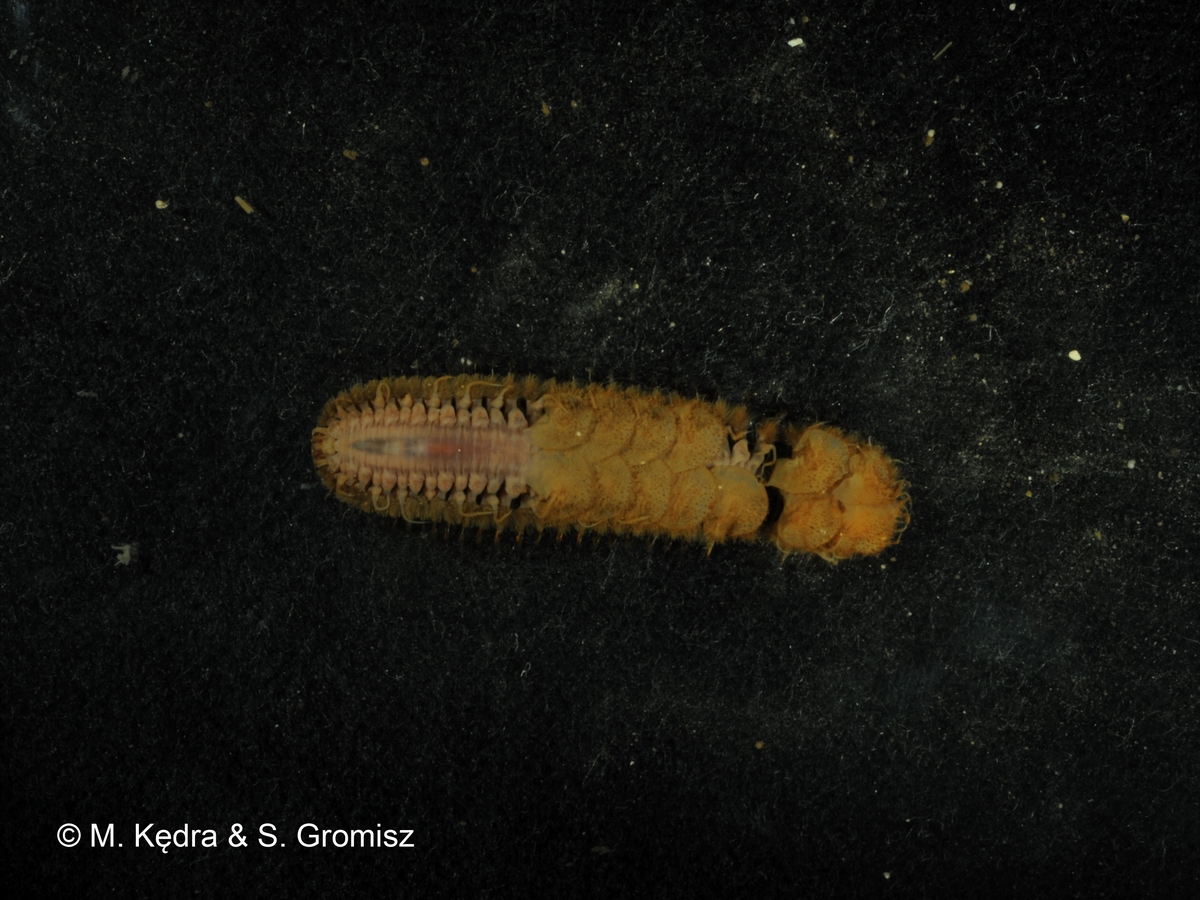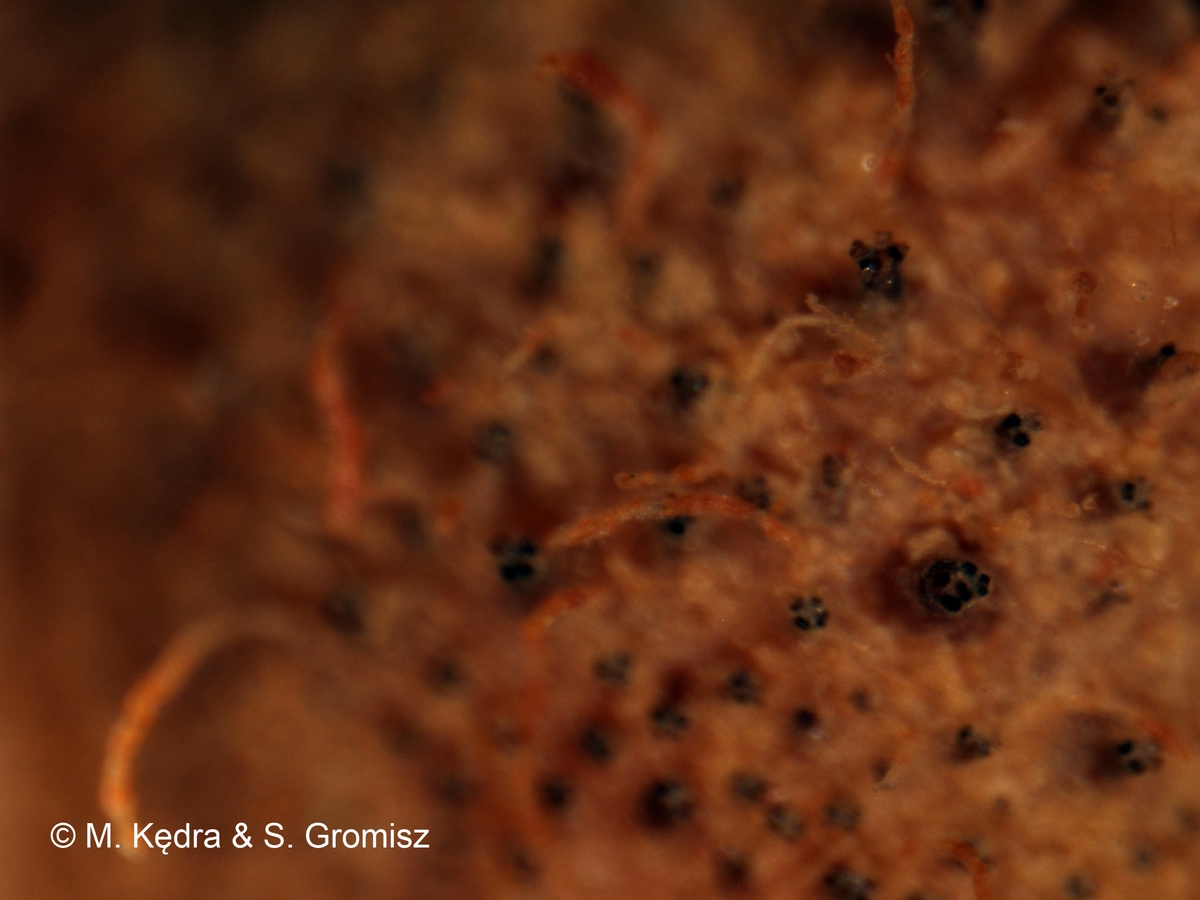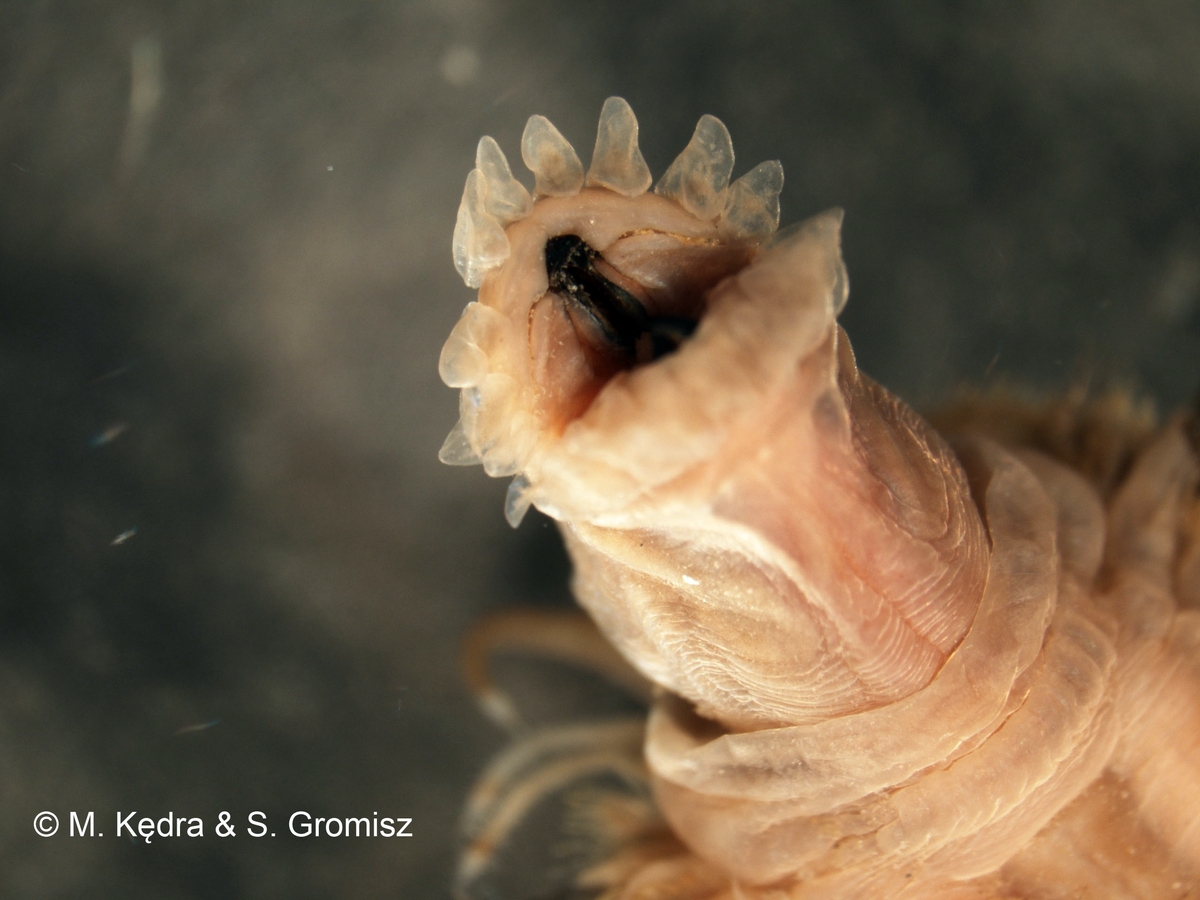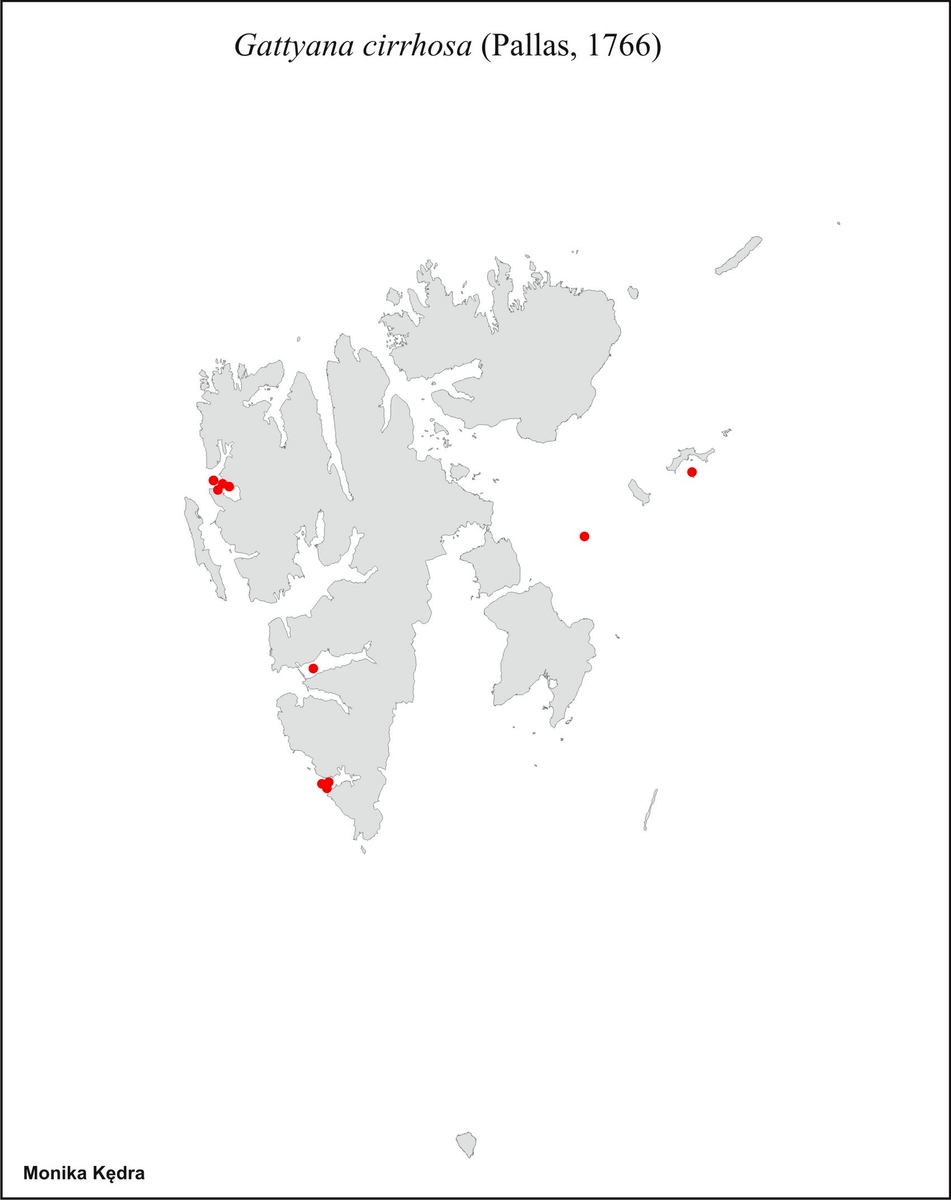Gattyana cirrhosa (Pallas, 1766)

|

|

|

|
Aphrodita cirrhosa Pallas, 1766
Lepidonote assimilis Örsted, 1843
Polynoe scabriuscula M. Sars,1861
Lepidonotus cirratus var. parasiticus Baird, 1865
Nychia cirrosa McIntosh, 1875
Iphione muricata Gibson, 1886
Gattyana cirrosa McIntosh, 1900
Gattyana cirrosa var. chaetopteri Fauvel, 1923
Gattyana nutti Pettibone,1955
Distinguishing characteristics
Prostomium bilobed, with a peak on each lobe, lateral antennae ventrally inserted.
Anterior pair of eyes below the prostomial peaks but visible from above.
Notochaetae stout with rows of spines and blunt tips and capillaries, with fine tips.
Scales with 4 pointed tips tubercules.
Species description
Body of uniform width, 38 chaetigers. Prostomium bilobed, with a peak on each lobe, median and lateral antennae papillate, and a pair of palps. Two pair of eyes, anterior pair below the prostomial peaks but visible from above, posterior pair in front of the rear margin. Peristomium bearing chaetae and a pair of dorsal and ventral papillate tentacular cirri. Scales overlap covering the body. First pair of scales are round, the remainder kidney-shaped, margins fringed with papillae, surface covered with small tubercules with bifid to 4 pointed tips. Notopodial chaetae stout with rows of spines and blunt tips and capillaries, with fine tips. Neuropodial chaetae with several rows of spines on the swollen terminal part and unidentate tips. Pygidium with dorsal anus and a pair of anal cirri.
Size
Up to 50 mm for 38 chaetigers.
Color
Pale yellow to brown, can be phosphorescent. Each scale has a small dark central patch.
Habitat
Prefers muddy sediments. Litoral to depths of 1000m, often found in polychaetae tubes, eg Amphitrite, Chaetopterus, Thelepus or with Bryozoa.
Mobility
Mobile.
Feeding
Omnivorous feeding on diatoms and small animals.
Life cycle
Breeding probably takes place in spring (March-June) and the larvae develop in the water column. The species spawns several times during its life. It can reach an age of at least 4-5 years.
Distribution
Arctic, North Pacific, North Atlantic, English Channel, whole North Sea, Skagerrak, Kattegat, Öresund and Belts up to Bay of Kiel.

